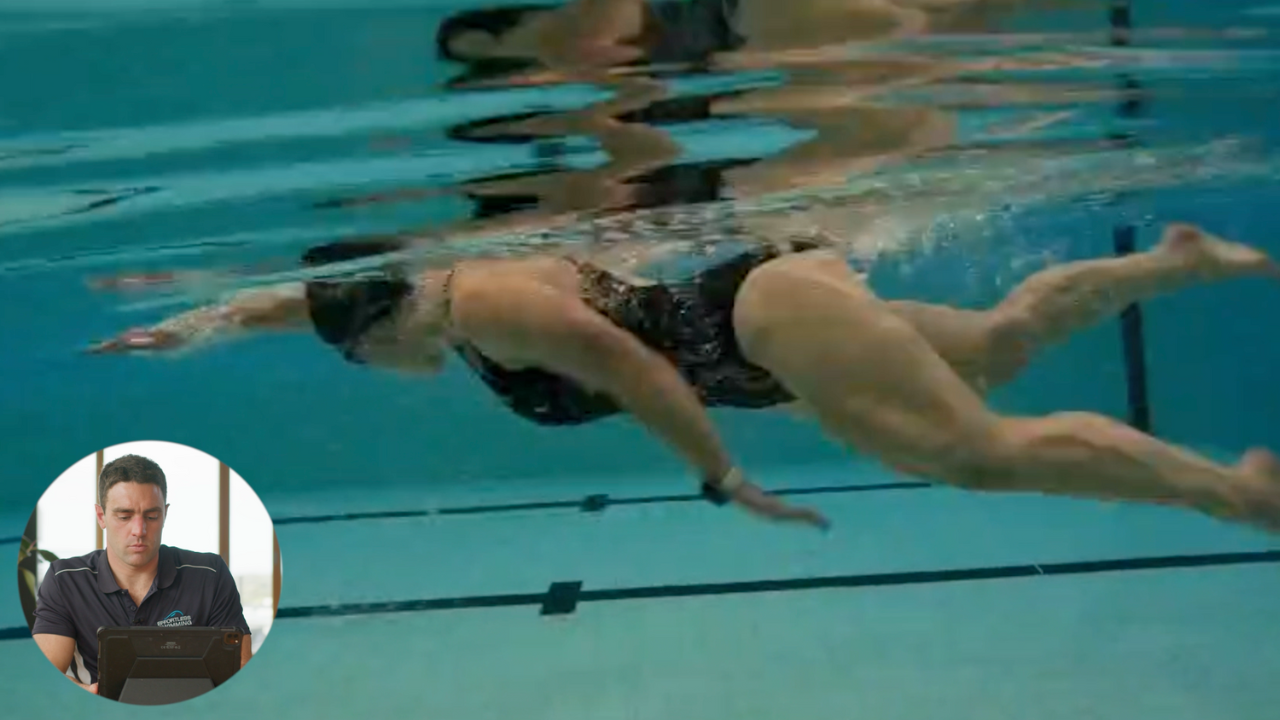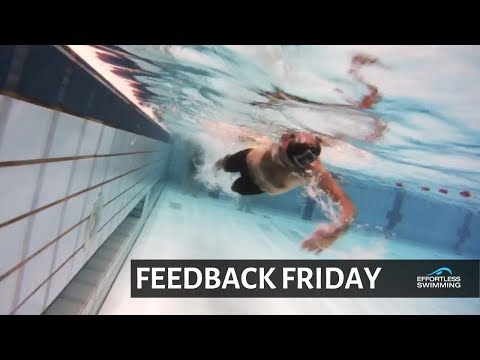After sighting (looking forwards), a lot of swimmers keep looking forward and it impacts their speed. If you use the sight and breathe method and return your eyes to your normal position this can fix it. The exception, if you’re following feet for drafting.
Transcription:
Hi, Brenton here from effortless swimming. In today’s video, I want to talk about where you should generally be looking when you’re swimming in open water.
When we swim in open water, obviously you’ll be sighting. You’re going to be looking up, you’re going to be lifting your head. That’s part and parcel with open water and a lot of the times you might need to be sighting every six to eight strokes. That’s a really common thing that you might need to do, especially if it’s hard to tell exactly if you’re going straight. So what should you do after you’re sighting? Well, it’s important to actually get your head back down in the same position that you would normally swim in.
Now the exception there is if you are following someone’s feet if you’re drafting off someone you know has got a generally pretty good sense of direction and you’re just checking where you’re going, then it’s okay to look a bit further forward. Make sure you’re staying on their feet. That’s probably going to be faster than if you are looking slightly down and you can’t tell whether or not you’re following their feet.
But in other cases, after you’ve looked forwards and you’ve sighted, you’re probably going to be better off looking down within that zero to 45-degree range that we typically recommend. Anywhere in that ideal head position range. Get the head back down there because one of the really common things that I see when we’re coaching people in the open water is they’ll sight and then they’ll continue to look a long way forwards and it really just impacts a number of things. Body position, sometimes a wetsuit will take care of that, but if you’ve got this big kink in your neck the whole time that you’re swimming, it can really impact the tautness and the position through the middle of your body. So we want to try and keep that long line, almost like you’re being pulled up from above, that long line through the spine, through the neck, and we want to extend through the back of the neck there. We don’t want to have this big kink or be hunched up through the shoulders and the way to do it is to make sure that your head is somewhere in that zero to 45-degree range.
Now with your sighting in open water, we did a video a little while ago about one of the best ways that you can sight without changing or losing your rhythm in freestyle. So I’ll put a link to that below and with that method, we call it the sight and breathe method where you essentially look forward and then on the next stroke you turn your head to breathe and then you come back down. That’s a really easy way to keep your rhythm and momentum going without losing any speed or feeling like you’ve got this hitch in your strike every time that you’re looking forward. So if you do need to sight every four, six or eight strokes, that’s the way to do it. So check out that video below. I’ll put a link in the description. Thanks for watching. Please like and subscribe if you did enjoy this video and share it with someone who you know does open water swimming or triathlon, they might benefit from it. Thanks again for watching and I’ll see you next week.










